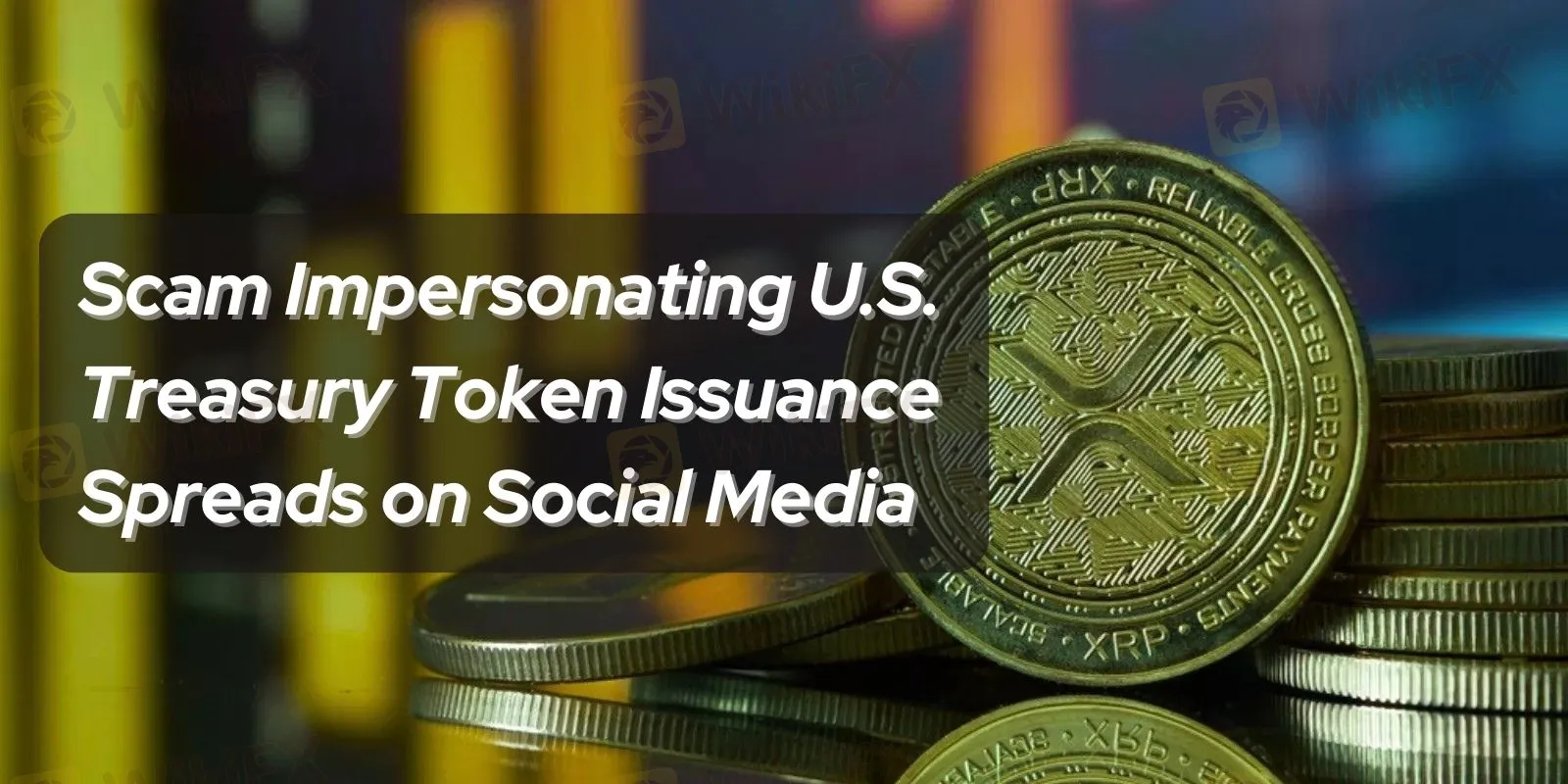简体中文
繁體中文
English
Pусский
日本語
ภาษาไทย
Tiếng Việt
Bahasa Indonesia
Español
हिन्दी
Filippiiniläinen
Français
Deutsch
Português
Türkçe
한국어
العربية
Scam Impersonating U.S. Treasury Token Issuance Spreads on Social Media
Abstract:A social media scam falsely claimed the US Treasury created an XRP wallet, exploiting misinformation and targeting crypto newcomers with fabricated credibility.

In January 2025, a new social media scam surfaced, falsely claiming that the US Treasury had created an XRP wallet. Despite obvious red flags, this hoax spread rapidly across platforms like X (formerly Twitter), fueled by major accounts amplifying the misinformation. The incident underscores the vulnerability of the crypto space to scams, particularly targeting inexperienced investors.
Unpacking the XRP Wallet Scam
The scam originated from accounts allegedly based in the Philippines, where individuals impersonated the US Treasury and claimed the creation of an XRP wallet. The wallet supposedly interacted with major financial institutions like Bank of America and JPMorgan, lending an air of credibility to the hoax. However, on-chain analysis quickly revealed that the wallet was neither affiliated with the US Treasury nor based in the United States.
The timing of the scam played into existing narratives. Since former President Trump‘s endorsement of a US Bitcoin Reserve and several states pursuing their own Bitcoin reserves, some speculated that the Treasury might also explore cryptocurrency investments. Coupled with XRP’s recent price surge, these factors made the hoax appear plausible to some in the community.
Targeting Vulnerable Investors
This scam highlighted a critical issue: the susceptibility of crypto newcomers to misinformation. Reports suggest that nearly half of TRUMP meme coin holders are first-time crypto investors. Without prior experience or knowledge, many fall prey to scams that appear credible due to verified accounts or trending narratives.
Zach Rynes, a Chainlink Community Liaison, pointed out that trained eyes could easily identify the red flags. However, he noted the difficulty of combating such hoaxes in a decentralized, fast-paced environment. The scam underscores the need for robust education and vigilance within the crypto community.
Recognizing the Nature of Scams
The XRP wallet scam underscores the importance of understanding the common characteristics of crypto scams. These schemes often use fabricated connections to reputable institutions, like the US Treasury in this case, to mislead and exploit trust. Identifying such red flags and cross-checking information with official sources are crucial steps in avoiding deception.
Disclaimer:
The views in this article only represent the author's personal views, and do not constitute investment advice on this platform. This platform does not guarantee the accuracy, completeness and timeliness of the information in the article, and will not be liable for any loss caused by the use of or reliance on the information in the article.
Read more

Is Linkbex a Scam? SFC Warns of Virtual Asset Fraud in Hong Kong
Hong Kong SFC warns against Linkbex for virtual asset fraud. Learn about false claims, locked accounts, and how to stay safe from investment scams.

Is $CORONA Memecoin a Legit Crypto Investment?
Explore if "$CORONA" memecoin is legit as Italy’s CONSOB bans its offer and blocks 11 crypto sites under MiCAR, targeting unauthorized services.

FCA Warns of Trading212 Clone Scam Targeting Investors
FCA alerts investors about a Trading212 clone scam using fake details. Learn how to spot clones and protect your funds with the WikiFX app.

Famous Olympic Breakdancer’s Brother Faces Crypto Fraud Charges
Australian Olympic breakdancer Rachel "Raygun" Gunn’s brother, Brendan Gunn, accused of crypto fraud involving $181,000. ASIC investigates.
WikiFX Broker
Latest News
Is $CORONA Memecoin a Legit Crypto Investment?
Is Pi Network the Next Big Crypto Opportunity?
Donald Trump’s Pro-Crypto Push Boosts PH Markets
Japan’s Shift in Crypto Policy and What It Means for Investors
Is Linkbex a Scam? SFC Warns of Virtual Asset Fraud in Hong Kong
5 Best Copy Trading Brokers: You Can Trust in 2025
3 EXCLUSIVE Ramadan Offers That Won’t Last Long! ACT NOW
The Next Crypto Giants: 5 Altcoins to Watch
Forex Trading: Scam or Real Opportunity?
The Hidden Tactics Brokers Use to Block Your Withdrawals
Currency Calculator






